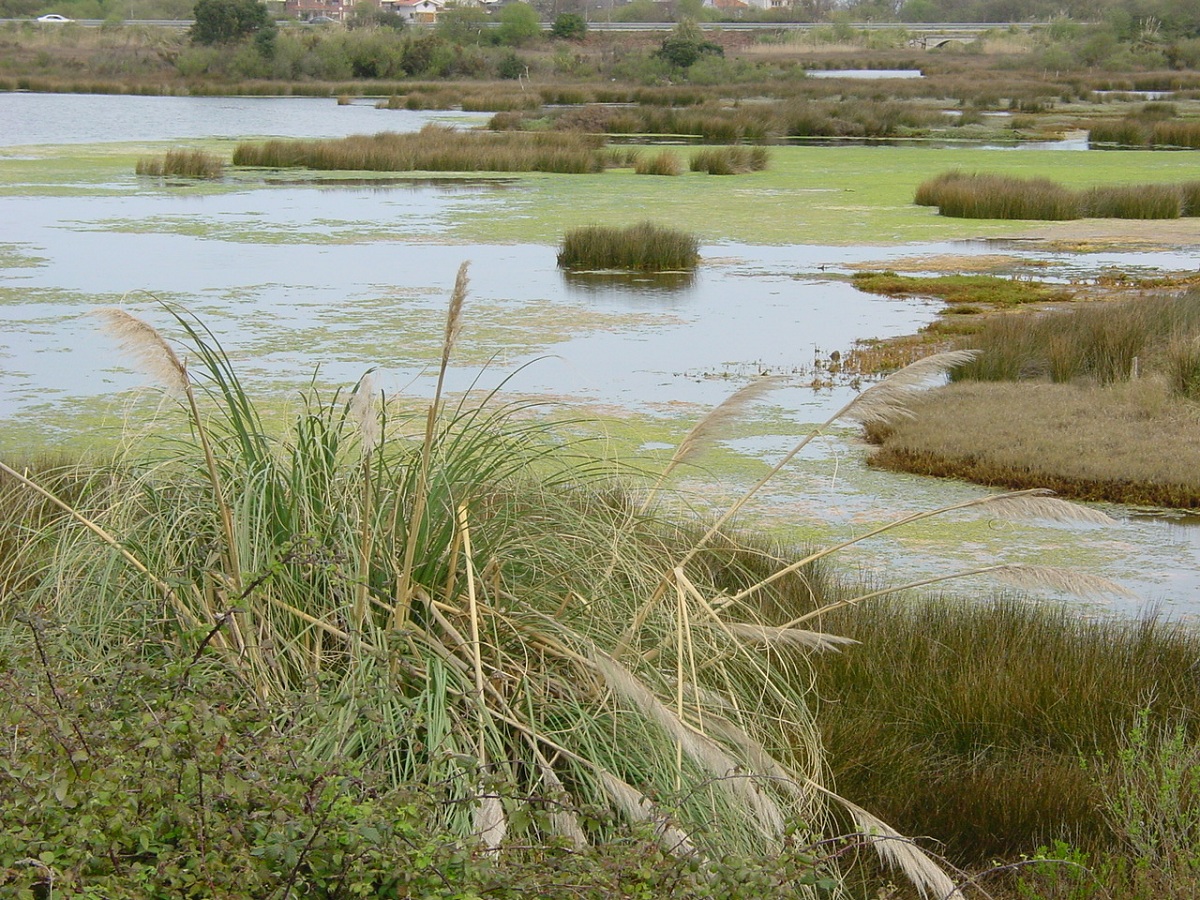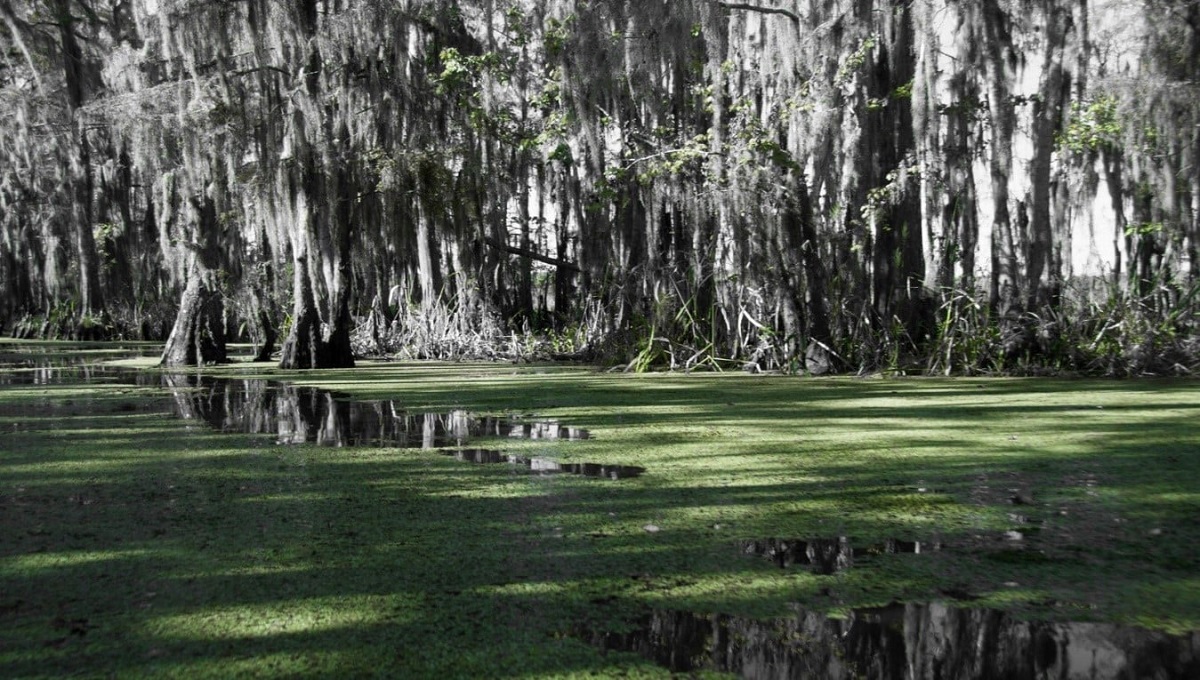
The swamps they are a flat, poorly drained area of permanent or temporary stagnant water, shallow, covered with vegetation. The layers of water are formed by floods caused by rain, floods due to the overflow of a river or lake, or by the action of the tides. If freshwater marshes are coastal saltwater areas, they are called bogs or estuaries and marshes. These ecosystems are considered wetlands, which is why they are included in the RAMSAR protocol due to their importance in the water cycle.
In this article we are going to tell you everything you need to know about swamps, their characteristics and the different types that exist.
Key features

Relief and hydrology
Bogs occur in low, flat, or depressed areas with poor drainage and characterized by the presence of shallow waters and abundant vegetation. This layer of water can exist permanently or for a long time.
The water comes from the overflow (flooding) or rain of a river or lake, combined with poorly drained soil and little infiltration (ponding).
Water
Due to the shallow depth of the swamp water, the aquatic swamp is rich in vegetation and low in dissolved oxygen. In addition, the high content of organic compounds in the suspension and dissolved organic acids in the water makes the pH acidic.
Land
As soils subject to permanent or near-permanent flooding, they are anoxic (lacking pure oxygen), making gas exchange difficult. The structure of the soil is also affected by the decomposition of the particles, since moisture makes cementation difficult.
These soils undergo reduction processes such as denitrification (the conversion of nitrates into nitrogen). They are usually heavy soils, that is, with a lot of clay in the texture. A layer of grayish-green calcareous soil is presented, product of the presence of ferrous iron due to the reduction process.
Peat
Partial decomposition of organic matter occurs due to excess water, acidic pH, and bacterial action. The process that produces the loss of hydrogen and, under these conditions, the formation of a dense carbonaceous substance called peat.
Microbial processes
The combination of aerobic zones (with free oxygen) and other anaerobic zones (without oxygen) gives rise to the development of various processes. In the swamp, the activity of decomposers has increased.
In these regions there are processes for the production of sulfides by reduction of sulfates in good light conditions. While in anaerobic and shaded areas, methanogenic bacteria produce methane (methanogenesis).
Climate
The weather is very changeable since swamps are found both in the tropics and in temperate and cold regions.
types of swamps

The swamps are classified according to different criteria, depending on the salinity of the water that composes them or the type of vegetation that inhabits them.
salt water swamp
It corresponds to the so-called swamps, coastal swamps usually associated with estuaries. These swamps are formed by overflowing rivers in depressions near estuaries.
Occur in sandy soils but are flooded by high water tables (groundwater supplied by nearby rivers). The type of vegetation that emerges is marshy grassland, dominated by rushes, sedges, and grasses, in addition to algae and other aquatic plants.
fresh water swamp
This type of swamp occurs in inland depressions due to flooding caused by rainwater or overflow of bodies of water. The soil is usually clayey and the vegetation can be more complex, with trees, shrubs and herbs.
Flora

The species of plants that inhabit the swamps must adapt to the perpetual presence of water. In the case of those brackish marshes, the limiting factor of salinity is added.
The swampy ecosystem is not uniform, with several emerging land areas alternating with large flooded areas. This determines the distribution of species based on their ability to withstand heavy downpours. (excess of water).
In this way, they can be found in submerged, rooted and floating aquatic species, as well as in other aquatic species that do not resist flooding for a long time.
Herbs and Shrubs
Among the grasses that take root in the bottom of the flooded areas are the reeds (Azalea). And the ones that float are bora (Eichhornia spp.) and various water lilies. Halophytes predominate in marshy areas, that is, lands that are tolerant to salinity. These include salad dressing (Sporobolus virginicus) and salt beet (Limonium vulgare).
Other halophytes are Atriplex (called halophytes) and wiregrass (Spartina spp.). In addition, cattails and shrubs, such as the swamp rose (Rosa palustris) in North America, are found in many swampy areas around the world.
Trees
Tropical zone
In the wooded swamps, there are a variety of species that can withstand permanent flooding. These include the Guiana chestnut (Pachira waterica), a tree up to 18 m tall whose seeds are edible.
Other species are palm trees such as the labón or palo cruz (Tabebuia nodosa), the curupí (Sapium haematospermum) and the pindó (Syagrus romanzoffiana).
Temperate zone
Even in temperate regions there are swamp conifers, swamp cypress (Taxodium distichum), swamps typical of Louisiana (USA). Also a species of Quercus, American bog oak or bog oak (Quercus palustris).
Likewise, the tupelo aquatic plant (Nyssa Aquatica) is an angiosperm found in the swampy regions of the southeastern United States.
Fauna
Tropical zone
Birds such as capybaras (Hydrochoerus hydrochaeris), marsh deer (Hippocamelus antisensis) and herons (Jabiru mycteria) live in tropical swamps. There are also some crocodiles (Caiman crocodilus, Caiman yacare. Crocodylus moreletii) and pythons (Eunectes murinus).
Temperate zone
in the swamps subtropical or temperate are large reptiles such as Mississippiensis alligators and crocodiles. There are also mammals such as the Canadian otter (Lontra canadensis), and birds such as the flamingo (Phoenicopterus ruber).
Maintaining the health of all these ecosystems is of vital importance to combat climate change, the loss of biodiversity and the existence of important natural resources for human beings. I hope that with this information you can learn more about what swamps are and their characteristics.